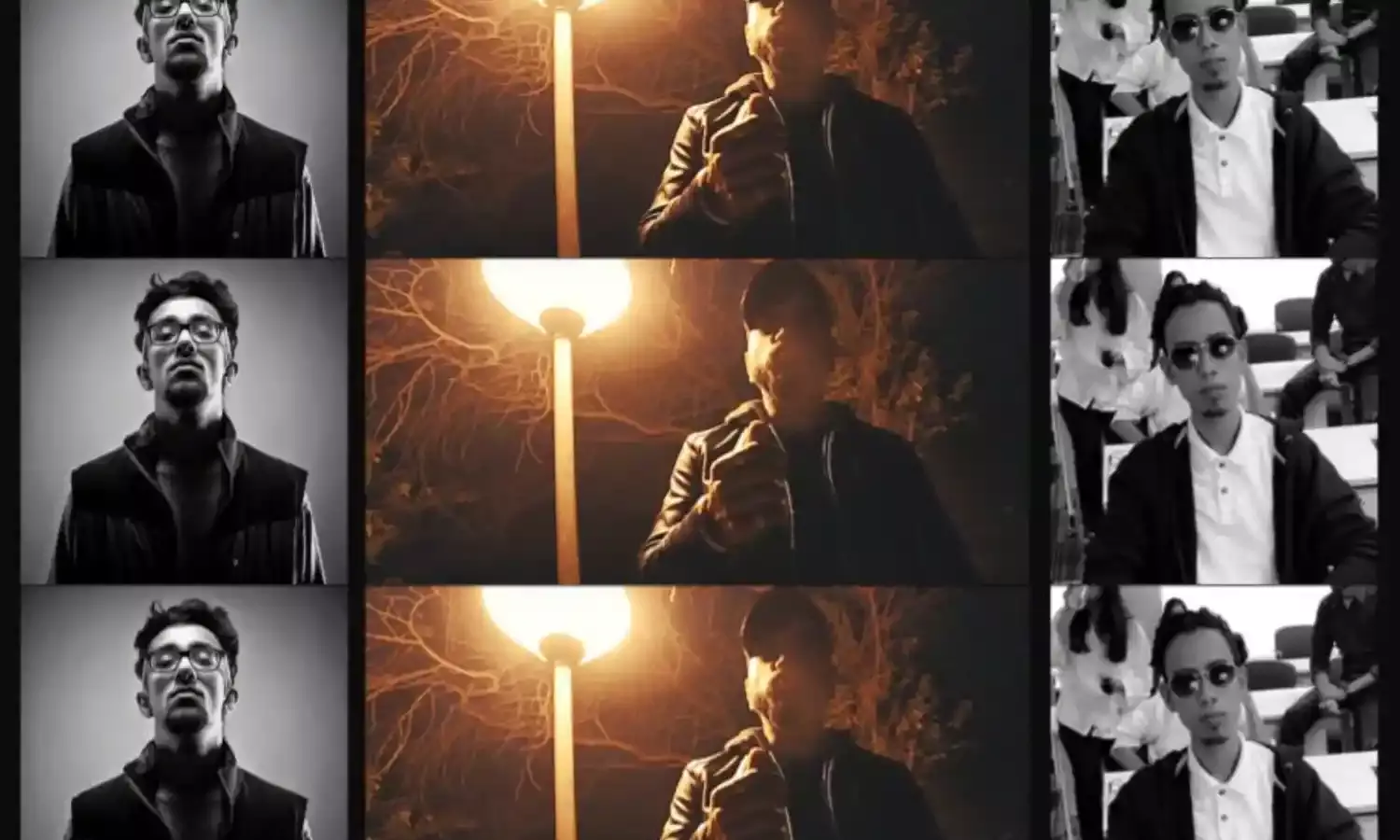South Asian Rap: Caught Between Commercialism and the Underground
Underground conscious rap in the subcontinent

MTV, a channel that runs on commercial music and advertisers’ money, has a performer on stage singing about farmer suicides. This is the struggle, the dilemma and triumph of underground conscious rap in our subcontinent.
A form of protest poetry at its core, underground conscious rap points to flaws in the system engendering awareness of social issues.
EPR with his song ‘Ekla Cholo Re’ about farmers’ suicides represents the underground in the mainstream. Playing to the gallery but not by the book.
Santhanam Srinivasan Iyer aka EPR, 31, who was runner-up in last year’s MTV Hustle, a reality show for rappers, has been part of the rap scene for fifteen years. “Audiences may not have known it, but this facet of hiphop music has always been there,” he says.
After drowning in the booze of commercialization, rap in India and Pakistan has moved from the noise of parties to the voice of the streets. An art of the oppressed and marginalised around the globe, the journey of hiphop is coming full circle here.
Hip hop was begun as a tool of retaliation by Blacks in North America. In our subcontinent too, Dalit, Adivasi, mill workers’ use of music to express their dissent should be marked as a starting point, says Yogesh Pawar, a communications professional and journalist.
According to Pawar, rap came to India and Pakistan in the 1990s when both economies were opened wide to foreign goods and investment. An influx of US pop culture inspired artists like Baba Sehgal and Fakhr-e-Alam to begin their career in the genre.
“However, they did not make any social contribution,” he believes.
While commercial rap was reaching the heights of success, the slums of Mumbai and Karachi were laying the foundations of underground conscious rap.
With anecdotal songs about personal hardship by groups like Mumbai’s Finest in India and Rap Engineers in Islamabad, rap became a voice against the establishment.
[In Kashmir, Roushan Illahi or MC Kash released his first album Rebel RepubliK in 2012.]
As Pawar says, “the system shut off these voices”. But they came out singing even louder and rap now has no linguistic borders. From English to Punjabi to Malayalam, Bengali, Balochi, Sindhi, it has spread across the region whose people are tackling similar issues.
“If you want to know about a country, listen to its artists and rappers, not its politicians,” says 27-year-old Rahul Negi aka Madara.
After a debut single in 2012 came a threat, he says, from the party in government back then. “It pushed me into darkness. It took me seven years to gather the courage to come back to light, and focus on my ambitions again.”
Negi says he uses his rap to show aggression against the establishment. The gloomy spaces and assertive gestures in his videos suggest his view of rap as a medium to show his anger.
Gestures, attitude or “swag” are part of the art. The body language, movements and the look in your eye which dares to meet the eyes of the powerful through the camera – these are elements essential to rap.
M.K Anwar, a rapper from Karachi, finds this part the most challenging. He has a visual impairment. “I don’t want anyone to see my face and say here’s someone new cashing on a disability. My image should not be my disability but a commercial.”
However, commercial viability is a tough test for these poets. “In Pakistan, there is no label or platform which supports us. Thus, as an independent artist it is difficult to continue music,” says Anwar.
Another artist facing similar hurdles is Muhammad Ahsan, a 21-year-old rapper in Gujranwala, Pakistan, who says he struggles to record his music as he belongs to a small city where there is no recording studio.
Ahsan also has to manage other expenses as his family cannot afford his education and art together. He believes that “Everyone can be a rapper” and not just the rich.
“I want to tell the condition of Pakistan in my story in which I tell from where I come,” he explains.
Gradually, with the growing popularity of the underground scene, mainstream artists want to milk the trend and have started taking up social issues as well.
“The mainstream likes to appropriate everything,” says Pawar, in such a way that they can cash the problems and move on.
Iyer observes that often commercial rappers will do a generic commentary on an amalgam of random issues to sound woke and to whitewash their image, which was built on misogynistic party hits.
By contrast, he says he prefers to take up one issue and talk about its different aspects and layers. But these are not songs to attract advertisers, and there is not much financial gain.
Thus these artists say they have only two options: to submit to the advertisers and compromise on their content, or keep struggling at the margins.
“Caught in commercialism and the underground, constantly defying to play by your rules, I bring my sound.”
This line from EPR’s rap Maya expresses these artists’ dilemma. It is the audience that determines their earnings from advertisers - who alone can secure them an audience.
The challenge therefore is to earn the ears.
Muhammad Ahsan | Pepsi Rap Battle Entry 07 of 07Muhammad Ahsan bringing the entries to an end and he made sure it ended with a bang!
With inputs from Kinza Tahir and Habiba Fatima (Pakistan)


